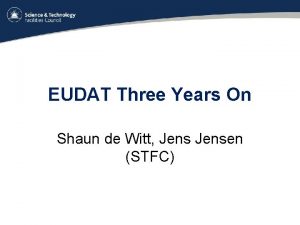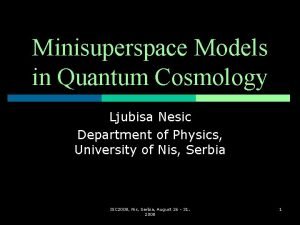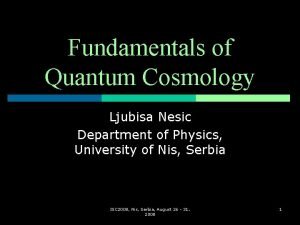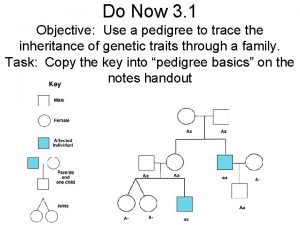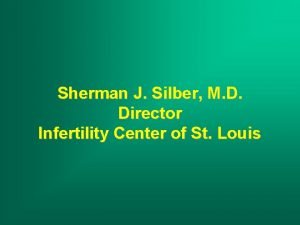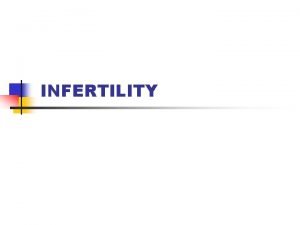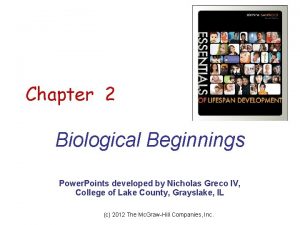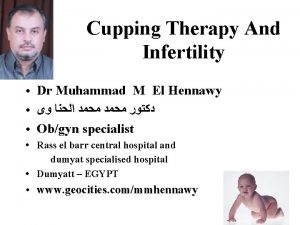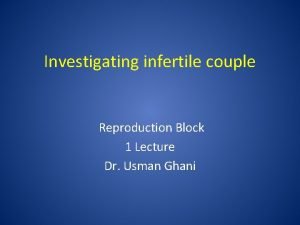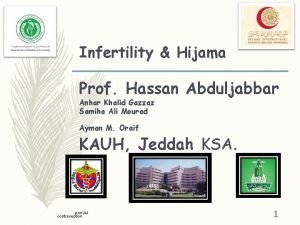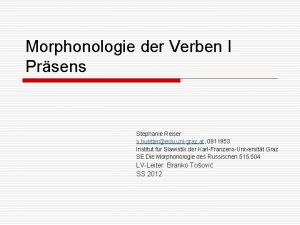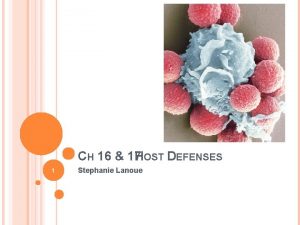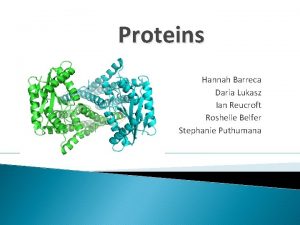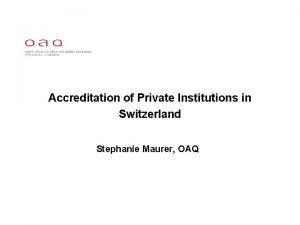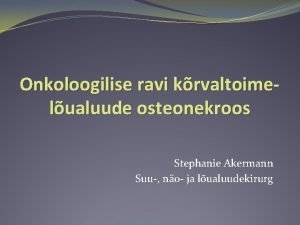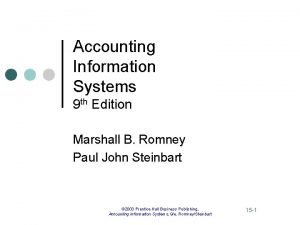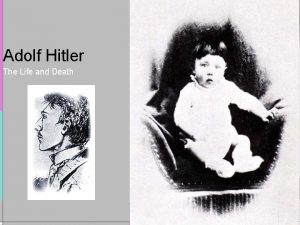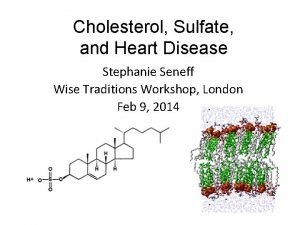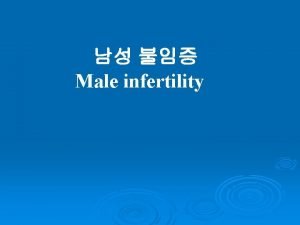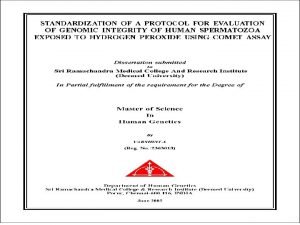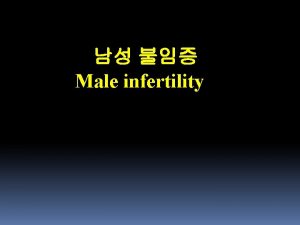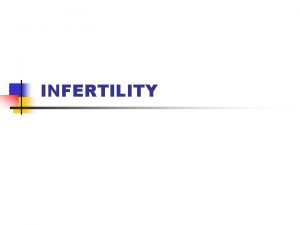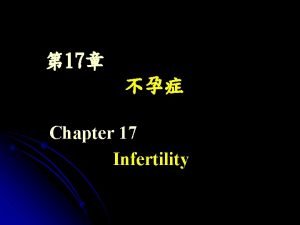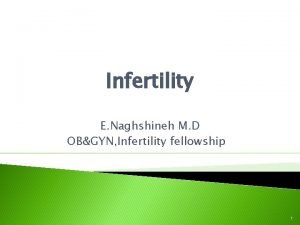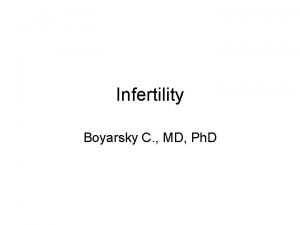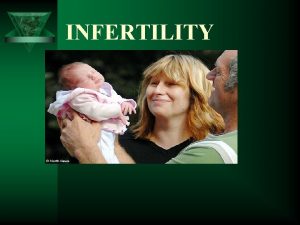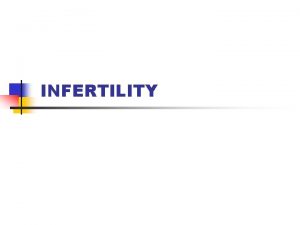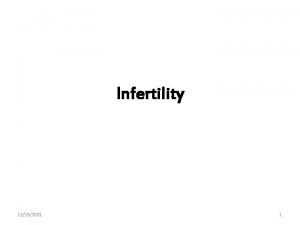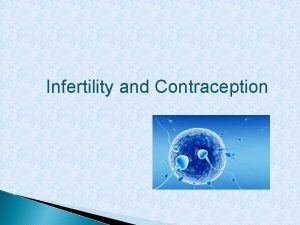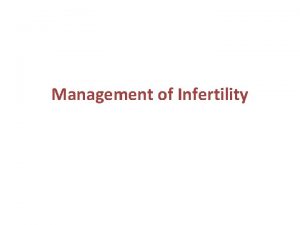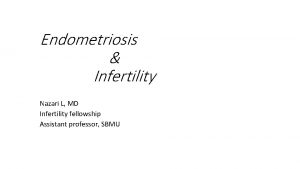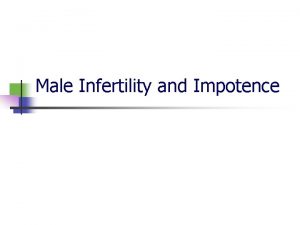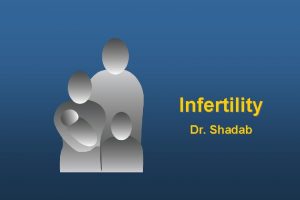Infertility Stephanie R Fugate D O Dewitt Army


























































- Slides: 58


Infertility Stephanie R. Fugate D. O. Dewitt Army Community Hospital Department of OB/GYN

Objectives • Define primary and secondary infertility • Describe the causes of infertility • Diagnosis and management of infertility

Requirements for Conception • Production of healthy egg and sperm • Unblocked tubes that allow sperm to reach the egg • The sperms ability to penetrate and fertilize the egg • Implantation of the embryo into the uterus • Finally a healthy pregnancy

Infertility • The inability to conceive following unprotected sexual intercourse – 1 year (age < 35) or 6 months (age >35) – Affects 15% of reproductive couples • 6. 1 million couples – Men and women equally affected

Infertility • Reproductive age for women – Generally 15 -44 years of age – Fertility is approximately halved between 37 th and 45 th year due to alterations in ovulation – 20% of women have their first child after age 30 – 1/3 of couples over 35 have fertility problems • Health problems develop • Ovulation decreases • Health of the egg declines • SAB • With the proper treatment 85% of infertile couples can expect to have a child

Infertility • Primary infertility – a couple that has never conceived • Secondary infertility – infertility that occurs after previous pregnancy regardless of outcome

Conception rates for fertile couples

Age and Pregnancy Rates % Cycle number

Age and related miscarriage

Causes for infertility • Male – – – – ETOH Drugs Tobacco Health problems Radiation/Chemotherapy Age Enviromental factors • Pesticides • Lead • Female – – – – – Age Stress Poor diet Athletic training Over/underweight Tobacco ETOH STD’s Health problems

Causes of Infertility • Anovulation (10 -20%) • Anatomic defects of the female genital tract (30%) • Abnormal spermatogenesis (40%) • Unexplained (10%-20%)

Evaluation of the Infertile couple • • History and Physical exam Semen analysis Thyroid and prolactin evaluation Determination of ovulation – Basal body temperature record – Serum progesterone – Ovarian reserve testing • Hysterosalpingogram


Abnormalities of Spermatogenesis

Male Factor • 40% of the cause for infertility • Sperm is constantly produced by the germinal epithelium of the testicle – Sperm generation time 73 days – Sperm production is thermoregulated • 1° F less than body temperature • Both men and women can produce anti-sperm antibodies which interfere with the penetration of the cervical mucus

Semen Analysis (SA) • Obtained by masturbation • Provides immediate information –Morphology – Quantity – Quality –Motility – Density of the sperm • • Abstain from coitus 2 to 3 days Collect all the ejaculate Analyze within 1 hour A normal semen analysis excludes male factor 90% of the time

Normal Values for SA Volume Sperm Concentration Motility Viscosity Morphology p. H WBC – 2. 0 ml or more – 20 million/ml or more – 50% forward progression 25% rapid progression – Liquification in 30 -60 min – 30% or more normal forms – 7. 2 -7. 8 – Fewer than 1 million/ml

Causes for male infertility • 42% varicocele – repair if there is a low count or decreased motility • 22% idiopathic • 14% obstruction • 20% other (genetic abnormalities)

Abnormal Semen Analysis • Azospermia – Klinefelter’s (1 in 500) – Hypogonadotropichypogonadism – Ductal obstruction (absence of the Vas deferens) • Oligospermia – – Anatomic defects Endocrinopathies Genetic factors Exogenous (e. g. heat) • Abnormal volume – Retrograde ejaculation – Infection – Ejaculatory failure

Evaluation of Abnormal SA • Repeat semen analysis in 30 days • Physical examination – Testicular size – Varicocele • Laboratory tests – Testosterone level – FSH (spermatogenesis- Sertoli cells) – LH (testosterone- Leydig cells) • Referral to urology

Evaluation of Ovulation

Menstruation • Ovulation occurs 13 -14 times per year • Menstrual cycles on average are Q 28 days with ovulation around day 14 • Luteal phase – dominated by the secretion of progesterone – released by the corpus luteum • Progesterone causes – Thickening of the endocervical mucus – Increases the basal body temperature (0. 6° F) • Involution of the corpus luteum causes a fall in progesterone and the onset of menses

Menstrual Cycle

Ovulation • A history of regular menstruation suggests regular ovulation • The majority of ovulatory women experience – fullness of the breasts – decreased vaginal secretions – abdominal bloating – mild peripheral edema – slight weight gain – depression • Absence of PMS symptoms may suggest anovulation

Diagnostic studies to confirm Ovulation • Basal body temperature – Inexpensive – Accurate • Endometrial biopsy – Expensive – Static information • Serum progesterone – After ovulation rises – Can be measured • Urinary ovulationdetection kits – Measures changes in urinary LH – Predicts ovulation but does not confirm it

Basal Body Temperature • Excellent screening tool for ovulation – Biphasic shift occurs in 90% of ovulating women • Temperature – drops at the time of menses – rises two days after the lutenizing hormone (LH) surge • Ovum released one day prior to the first rise • Temperature elevation of more than 16 days suggests pregnancy


Serum Progesterone • Progesterone starts rising with the LH surge – drawn between day 21 -24 • Mid-luteal phase – >10 ng/ml suggests ovulation

Anovulation

Anovulation Symptoms Evaluation* • Irregular menstrual cycles • Amenorrhea • Hirsuitism • Acne • Galactorrhea • Increased vaginal secretions • Follicle stimulating hormone • Lutenizing hormone • Thyroid stimulating hormone • Prolactin • Androstenedione • Total testosterone • DHEAS *Order the appropriate tests based on the clinical indications

Anatomic Disorders of the Female Genital Tract

Sperm transport, Fertilization, & Implantation • The female genital tract is not just a conduit – facilitates sperm transport – cervical mucus traps the coagulated ejaculate – the fallopian tube picks up the egg • Fertilization must occur in the proximal portion of the tube – the fertilized oocyte cleaves and forms a zygote – enters the endometrial cavity at 3 to 5 days • Implants into the secretory endometrium for growth and development

Acquired Disorders • Acute salpingitis – Alters the functional integrity of the fallopian tube • N. gonorrhea and C. trachomatis • Intrauterine scarring – Can be caused by curettage • Endometriosis, scarring from surgery, tumors of the uterus and ovary – Fibroids, endometriomas • Trauma

Congenital Anatomic Abnormalities

Hysterosalpingogram • An X-ray that evaluates the internal female genital tract – architecture and integrity of the system • Performed between the 7 th and 11 th day of the cycle • Diagnostic accuracy of 70%

Hysterosalpingogram • The endometrial cavity – Smooth – Symmetrical • Fallopian tubes – Proximal 2/3 slender – Ampulla is dilated • Dye should spill promptly

Unexplained infertility • 10% of infertile couples will have a completely normal workup • Pregnancy rates in unexplained infertility – no treatment 1. 3 -4. 1% – clomid and intrauterine insemination 8. 3% – gonadotropins and intrauterine insemination 17. 1%

Treatment of the Infertile Couple

Inadequate Spermatogenesis • Eliminate alterations of thermoregulation • Clomiphene citrate is occasionally used for induction of spermatogenesis – 20% success • In vitro fertilization may facilitate fertilization • Artificial insemination with donor sperm is often successful

Anovulation • Restore ovulation – Administer ovulation inducing agents • Clomiphene citrate – Antiestrogen – Combines and blocks estrogen receptors at the hypothalamus and pituitary causing a negative feedback – Increases FSH production • stimulates the ovary to make follicles

Clomid • Given for 5 days in the early part of the cycle • Maximum dose is usually 150 mg • 50 mg dose - 50% ovulate • 100 mg -25% more ovulate • 150 mg lower numbers of ovulation • No changes in birth defects If no pregnancy in 6 months refer for advanced therapies • 7% risk of twins 0. 3% triplets • SAB rate 15%

Superovulatory Medications • If no response with clomid then gonadotropins. FSH (e. g. pergonal) can be administered intramuscularly – This is usually given under the guidance of someone who specializes in infertility • This therapy is expensive and patients need to be followed closely • Adverse effects – Hyperstimulation of the ovaries – Multiple gestation – Fetal wastage

Anatomic Abnormalities • Surgical treatments – – Lysis of adhesions Septoplasty Tuboplasty Myomectomy • Surgery may be performed – laparoscopically – hysteroscopically • If the fallopian tubes are beyond repair one must consider in vitro fertilization

Assisted Reproductive Technologies (ART) • Explosion of ART has occurred in the last decade. • Theses technologies help provide infertile couples with tools to bypass the normal mechanisms of gamete transportation. • Probability of pregnancy in healthy couples is 30 -40% per cycle, live birth rate 25%. – this varies depending on age


Emotional Impact • Infertility places a great emotional burden on the infertile couple. • The quest for having a child becomes the driving force of the couples relationship. • The mental anguish that arises from infertility is nearly as incapacitating as the pain of other diseases. • It is important to address the emotional needs of these patients.

Conclusion • Infertility should be evaluated after one year of unprotected intercourse. • History and Physical examination usually will help to identify the etiology. • If patients fail the initial therapies then the proper referral should be made to a reproductive specialist.

Test Question Case 1 • A couple in their late 20’s with primary infertility for 18 months. The women has regular monthly cycles. The husband has never fathered a child. Neither partner has a history of STD’s or major illness. No difficulties with erection or ejaculation. Which is the most likely cause of their infertility? A. Anovulation B. Abnormality of Spermatogenesis C. Female Anatomic disorder D. Immunologic disorder

Case 1 • Spermatogenesis- causes 40% infertility, anovulation-1020% and anatomic defects- 30 -40%-the majority of which being from salpingititis. Given the history of regular menstrual cycles and no infections, anovulation and anatomic defects is unlikely. • Which study would not be indicated as part of the initial evaluation? A. Basal Body temperature record B. Semen Analysis C. Hysterosalpingogram D. Diagnostic Laparoscopy

Case 1 • Diagnostic Laparoscopy- This should be reserved until the initial tests are completed. All the other tests are used in the initial workup. • Anovulation is found in the female partner, despite her regular cycles. The next step is? A. Induce ovulation with clomid B. Perform artificial insemination C. Induce ovulation with gonadotropins (pergonal) D. Perform diagnostic laparoscopy to rule out other causes

Case 1 • Induce ovulation with clomid- Gonadotropins would be used if the patient failed clomid. Artificial insemination and laparoscopy are not indicated yet.

Case 2 • A 37 yo women with a history of gonococcal salpingitis presents with her spouse for evaluation of infertility. • What study is most indicated on the initial evaluation? A. Basal body temperature record B. Semen analysis C. Hysterosalpingogram D. Endometrial Biopsy

Case 2 • Without evidence of anovulation the endometrial bx is not indicated. The couple should have A, B, and C. • The HSG reveals bilateral tubal obstruction. A consultant recommends she not have surgery because of the poor prognosis of pregnancy. What should be recommended next? A. B. C. D. Intrauterine insemination In vitro fertilization No therapy at all Adoption

Case 2 • Because of the obstruction in the tubes the only appropriate therapy would be in vitro fertilization. Insemination would not get the sperm past the obstruction. Adoption is also and option.

Questions?

Causes for Abnormal SA Abnormal Count • No sperm – – Klinefelter’s syndrome Sertoli only syndrome Ductal obstruction Hypogonadotropichypogonadism • Few sperm – – Genetic disorder Endocrinopathies Varicocele Exogenous (e. g. , Heat)

Cont. causes for abnormal SA • Abnormal Morphology – Varicocele – Stress – Infection (mumps) • Abnormal Motility – – – Immunologic factors Infection Defect in sperm structure Poor liquefaction Varicocele • Abnormal Volume – No ejaculate • • Ductal obstruction Retrograde ejaculation Ejaculatory failure Hypogonadism – Low Volume • • Obstruction of ducts Absence of vas deferens Absence of seminal vesicle Partial retrograde ejaculation • Infection
 Hassibe osman dewitt
Hassibe osman dewitt Hassibe osman dewitt
Hassibe osman dewitt Shaun dewitt
Shaun dewitt Wheeler dewitt equation
Wheeler dewitt equation Wheeler dewitt equation
Wheeler dewitt equation Dr michael witt
Dr michael witt Fugate family tree
Fugate family tree Blue people kentucky
Blue people kentucky Blue people.of kentucky
Blue people.of kentucky Family with blue skin
Family with blue skin Fugate family tree
Fugate family tree Sherman silber md
Sherman silber md Hormonal surge meaning
Hormonal surge meaning Cystic fibrosis male infertility
Cystic fibrosis male infertility Cupping therapy for fertility
Cupping therapy for fertility Female infertility
Female infertility Hijama before ivf
Hijama before ivf Army central army registry
Army central army registry Stephanie zappa
Stephanie zappa Stephanie dayan
Stephanie dayan Stephanie janusch
Stephanie janusch Infinitivstamm
Infinitivstamm Stephanie millar
Stephanie millar Stephanie lanoue
Stephanie lanoue Lauren cycyk
Lauren cycyk Stephanie seavers
Stephanie seavers Stephanie vecchio
Stephanie vecchio Wasteberg
Wasteberg Stephanie baus
Stephanie baus Stephanie daria h
Stephanie daria h Stephanie d wilson
Stephanie d wilson Stephanie seneff mit vaccines
Stephanie seneff mit vaccines Stephanie shumate
Stephanie shumate Stephanie shawn
Stephanie shawn Stephanie stollar
Stephanie stollar Dworkin interpretivism
Dworkin interpretivism Stephanie stute
Stephanie stute Stephanie maurer
Stephanie maurer Osteonekroos
Osteonekroos Stephanie cotton
Stephanie cotton Stephanie olivas
Stephanie olivas Chat and conferencing
Chat and conferencing Dr hahusseau stéphanie
Dr hahusseau stéphanie Stephanie mansell
Stephanie mansell What did stephanie cromwell and elizabeth venko decide?
What did stephanie cromwell and elizabeth venko decide? Stephanie odom
Stephanie odom Machismo examples
Machismo examples Stephanie weidman
Stephanie weidman Was invented by stephanie kwolek in 1966
Was invented by stephanie kwolek in 1966 Stephanie barger
Stephanie barger Stephanie spielman osu
Stephanie spielman osu What does michelle ask david asl
What does michelle ask david asl Erwin giesing
Erwin giesing Stefanie tompkins bio
Stefanie tompkins bio Old nzvy
Old nzvy Stephanie jean philippe
Stephanie jean philippe Refraction
Refraction Stephanie seneff cholesterol
Stephanie seneff cholesterol Stephanie cook model
Stephanie cook model


